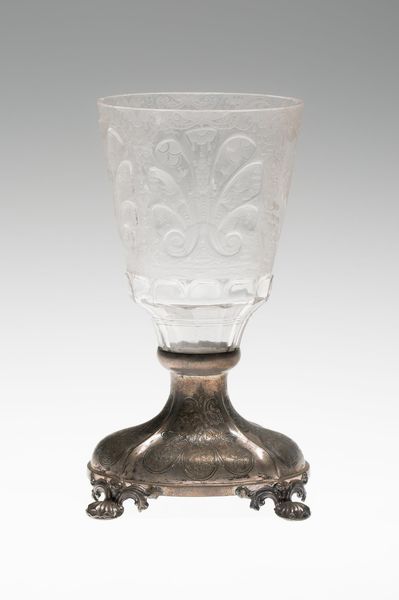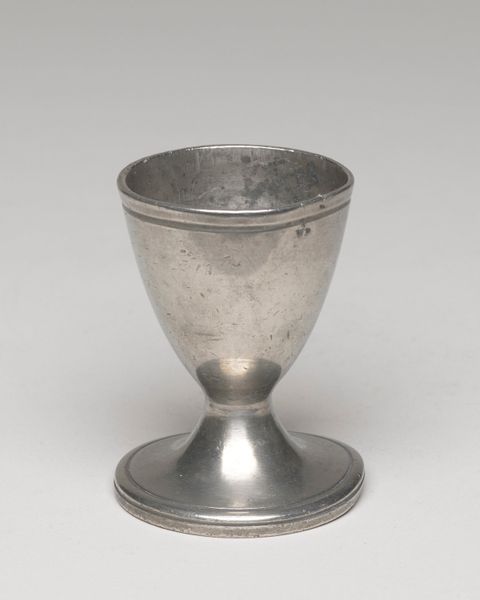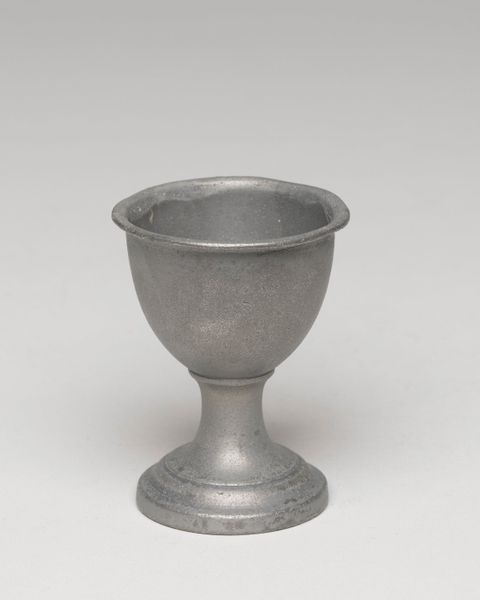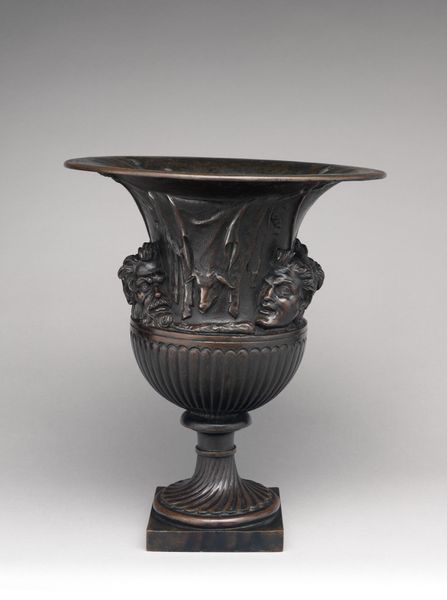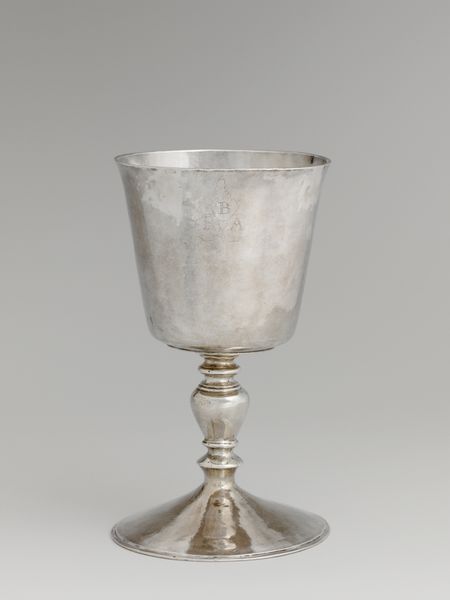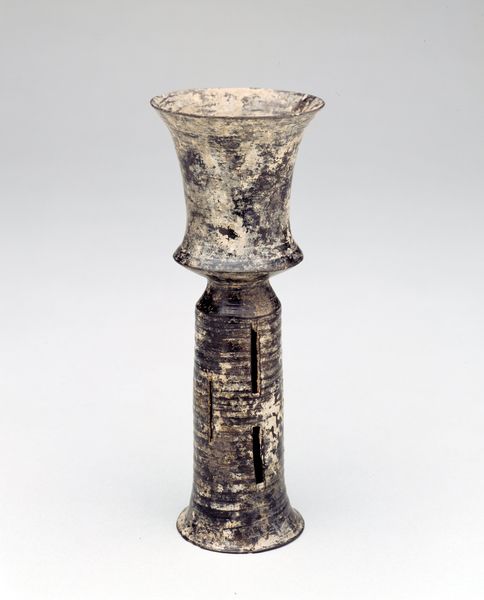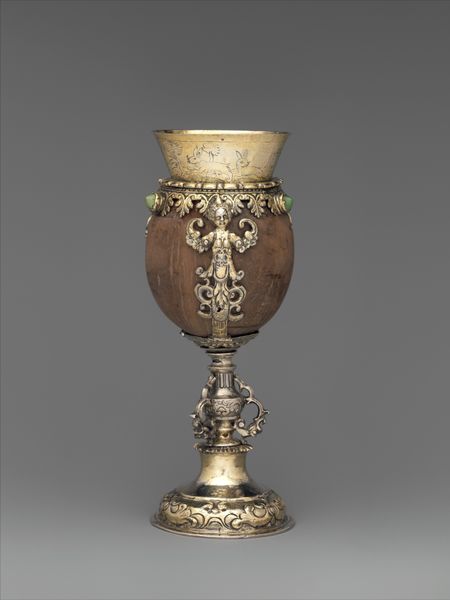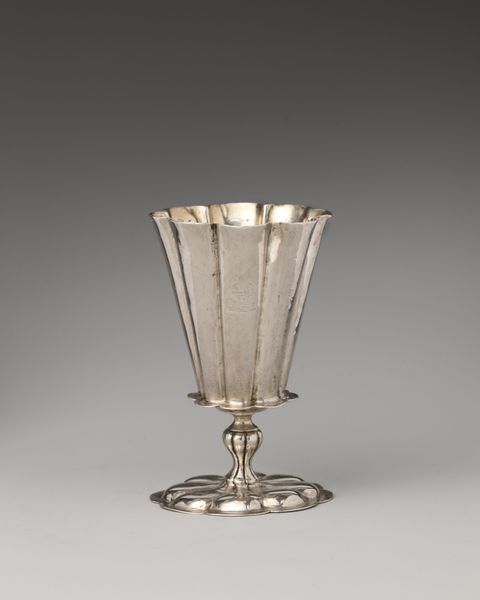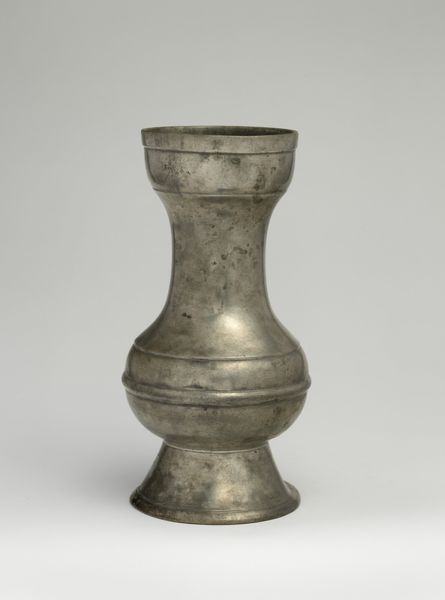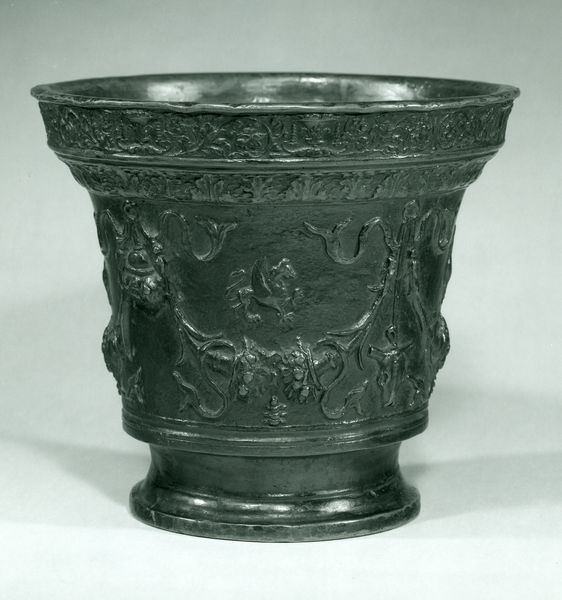
ceramic, sculpture
#
medieval
#
sculpture
#
ceramic
#
sculpture
#
ceramic
#
decorative-art
Dimensions: 5 3/16 x 2 7/8 x 2 7/8 in. (13.18 x 7.3 x 7.3 cm)
Copyright: Public Domain
Editor: Here we have a ceramic wine cup, likely from the 20th century, currently held at the Minneapolis Institute of Art. Its surface is a mottled grey with incised decorations. I immediately think of medieval chalices when I see it. What symbolic readings jump out at you? Curator: The immediate connection to the medieval period is significant. Though it's a 20th-century piece, the conscious invocation of that era channels specific cultural memories. Note the vegetal patterns. They aren't simply decorative. What might they signify, considering wine’s cultural importance? Editor: Grapes, maybe? Wine, celebration, the Eucharist? Curator: Precisely. And what feelings or ideas does that layering of meanings evoke in you, when we consider that it's crafted in a ceramic material, giving it a humble aura rather than one of gold and precious stones? Editor: Well, that juxtaposition feels really interesting. The material suggests everyday use, or maybe even a copy meant for display, which alters its potential ritual significance. Does that contrast point to changing social relationships with religious symbols? Curator: It's a perceptive observation! This ‘everydayness’ you're feeling suggests a democratization of sacred imagery, allowing it to enter the domestic sphere and prompting new interpretations that may have diverged from those held during its time. Editor: I hadn’t considered that – it changes how I see it entirely. Curator: These objects act as memory vessels, carrying encoded messages across time and material, prompting viewers like us to continually reinterpret these cultural values, questioning continuity and change.
Comments
No comments
Be the first to comment and join the conversation on the ultimate creative platform.
